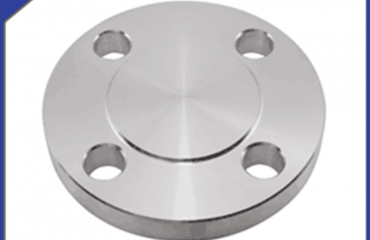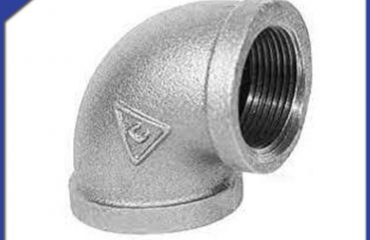
The Difference Between Special Flanges and Regular Flanges
Flanges are critical components in piping systems, facilitating secure and leak-free connections between pipes, valves, pumps, and other equipment. While regular (standard) flanges adhere to established industry norms, special flanges are engineered to address unique requirements that standard designs cannot fulfill. This paper explores the key distinctions between special and regular flanges, focusing on their design principles, applications, structural features, and regulatory frameworks.
1. Definition and Scope
Regular Flanges
Regular flanges, also known as standard flanges, are manufactured according to internationally recognized standards such as ASME B16.5, EN 1092-1, or GB/T 9112. These standards dictate precise dimensions, pressure ratings, and material specifications to ensure compatibility and safety across industries. Common types include welding neck flanges, slip-on flanges, socket weld flanges, and threaded flanges. Regular flanges are widely used in general industrial applications where standardization is prioritized.
Special Flanges
Special flanges, conversely, deviate from standard designs to meet specific operational or environmental demands. They are often custom-engineered for niche scenarios, such as extreme temperatures, corrosive media, or non-standard pipe configurations. Examples include reducing (orifice) flanges, tongue-and-groove flanges, and flanges with integrated sensor ports. Special flanges may also be non-compliant with traditional standards, relying instead on bespoke calculations or industry-specific regulations.
2. Key Differences
2.1 Design Objectives
Regular flanges are optimized for universality and interchangeability. Their dimensions, bolt patterns, and sealing surfaces are standardized to ensure seamless integration into diverse systems. For instance, a standard welding neck flange (WNRF) is designed with a conical hub to distribute stress evenly, making it suitable for high-pressure, high-temperature applications.
Special flanges, however, prioritize functionality over standardization. For example, a reducing flange (Figure 1) adjusts the bore size to accommodate mismatched pipe diameters, while a tongue-and-groove flange enhances sealing integrity in critical systems. Some special flanges, like those used in cryogenic pipelines, incorporate thermal insulation layers to minimize heat transfer.
2.2 Application Scenarios
Regular flanges dominate general industrial settings, such as water distribution networks, HVAC systems, and low-risk chemical processes. They are cost-effective and readily available off-the-shelf.
Special flanges are reserved for specialized environments. For example:
Orifice flanges in flow metering systems include pressure taps to measure differential pressure across a restriction plate.
Slip-on flanges with O-ring grooves are used in corrosive environments, where traditional gaskets might fail.
Explosion-proof threaded flanges are mandatory in oil refineries to avoid sparking during installation.
2.3 Structural Features
Regular flanges adhere to uniform geometric rules. For instance, ASME B16.5 specifies that a Class 150 flange has a defined bolt circle diameter and thickness. Their sealing surfaces—typically flat face (FF), raised face (RF), or ring joint (RJ)—are designed for compatibility with standard gaskets.
Special flanges often feature modified geometries. A lap-joint flange, for example, includes a loose hub that allows rotational alignment, simplifying installation in cramped spaces. In contrast, a blind flange used in nuclear reactors may incorporate radiation-shielding materials. Additionally, special flanges may use non-standard materials like titanium or Hastelloy for corrosion resistance.
2.4 Material Selection
Regular flanges are commonly made from carbon steel, stainless steel, or ductile iron, aligned with standard material grades (e.g., ASTM A105 for carbon steel).
Special flanges may require exotic materials. For instance, flanges in offshore applications might use duplex stainless steel to withstand chloride stress corrosion. In semiconductor manufacturing, aluminum flanges with electropolished surfaces prevent particle contamination.
2.5 Regulatory Compliance
Regular flanges must comply with strict standards, ensuring safety and interoperability. For example, EN 1092-1 mandates pressure-temperature ratings and material testing protocols.
Special flanges, while sometimes referencing standards for baseline requirements, often rely on custom engineering calculations. In the absence of a standard, they may adhere to project-specific codes or third-party certifications (e.g., API 6A for oilfield equipment).
3. Case Studies
3.1 Reducing Flanges
A reducing flange, or reducer flange, bridges mismatched pipe sizes. Unlike standard flanges with uniform bores, reducing flanges feature stepped or tapered interiors to transition between diameters. They are critical in process industries where equipment (e.g., pumps, valves) may have non-standard connections.
3.2 Orifice Flanges
Orifice flanges are integral to flow measurement systems. They incorporate pressure taps to monitor differential pressure across an orifice plate, enabling accurate flowrate calculations. These flanges are custom-engineered to ensure precise alignment and minimal turbulence, deviating from standard flange designs.
3.3 High-Strength Forged Flanges
In high-voltage transmission systems, forged flanges with reinforced necks are used to connect steel towers. These flanges are designed to withstand dynamic loads and extreme weather conditions, requiring rigorous finite element analysis to ensure structural integrity.
4. Conclusion
The distinction between special and regular flanges lies in their adaptability to specific needs versus adherence to standardized norms. Regular flanges excel in general applications where consistency and cost-efficiency are paramount, while special flanges are indispensable in specialized scenarios requiring customization. Understanding these differences is vital for engineers to select the appropriate flange type, ensuring optimal performance, safety, and longevity in piping systems. As industrial demands evolve, the role of special flanges will continue to expand, driven by innovation and the need to address increasingly complex operational challenges.
 Language
Language Espanol
Espanol English
English Italian
Italian عربى
عربى
 Skype: chinamaker99
Skype: chinamaker99  Tel: 86-316-5120812
Tel: 86-316-5120812 Email:
Email:  Whatsapp:
Whatsapp: 

